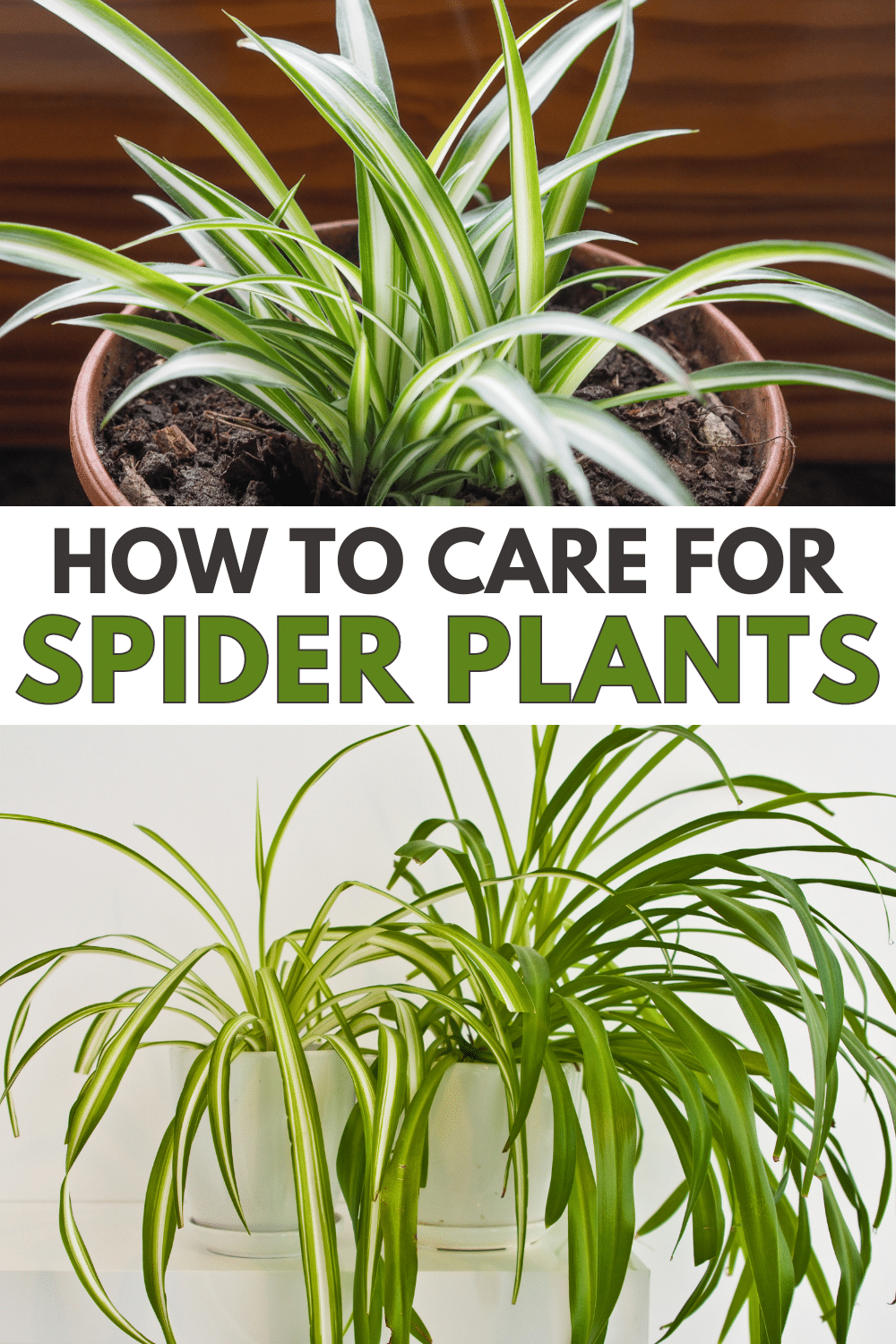If you’ve read a lot about indoor plants, you may have already come across spider plants. Also called spider ivy, this plant is one of the easiest ones to grow because it can adapt easily to its environment. It’s not only good for beginners, but there are also many types of spider plants that you can choose from.
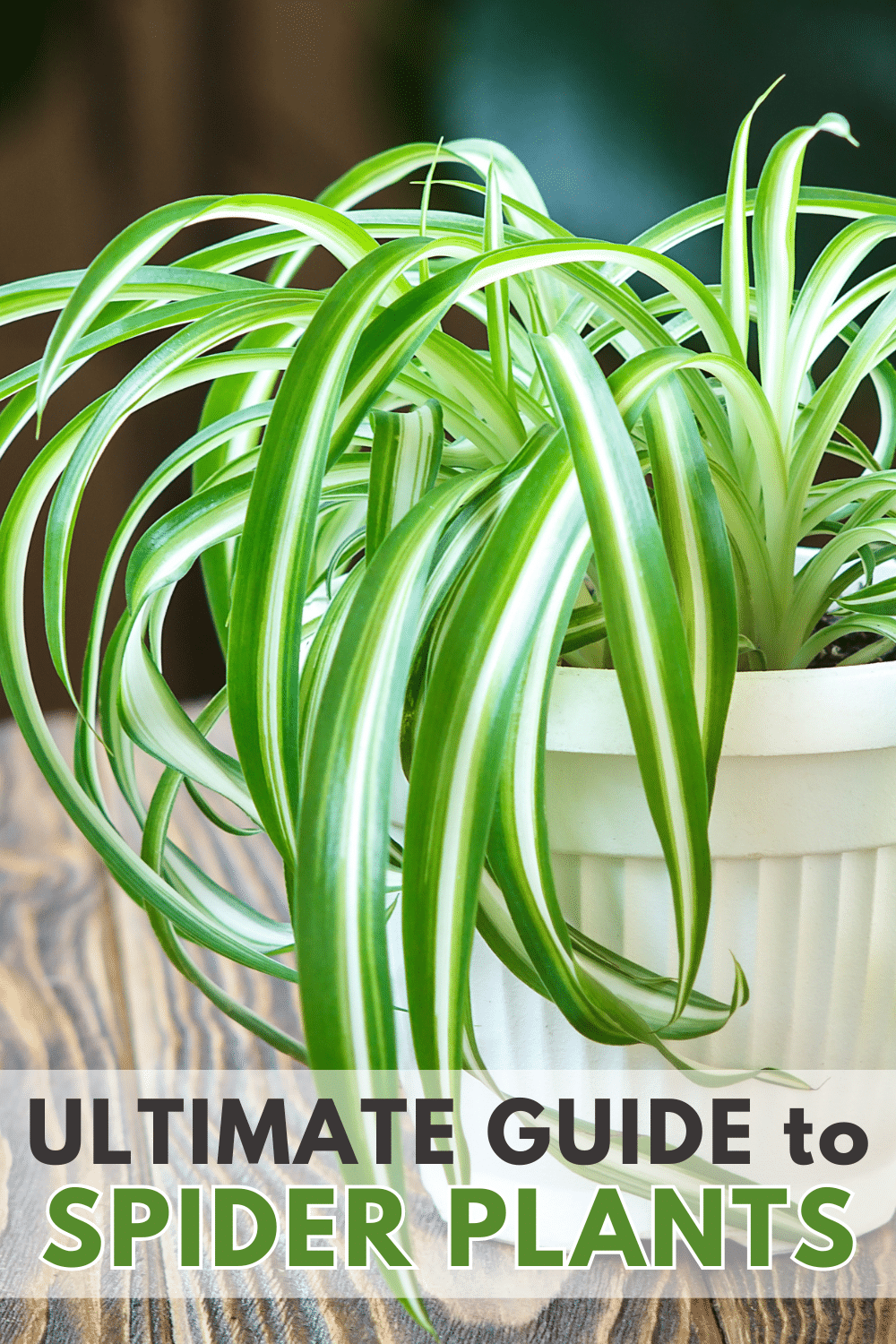
Spider plants are really beautiful, and they add a touch of uniqueness to any indoor plant collection. Whether you’re new to growing plants or you want a gorgeous and reliable species to add to your home, spider plants are a terrific choice!
Want to learn how to grow spider plants indoors? Read on to learn more about them!
Jump to:
What Is a Spider Plant?
In the world of indoor plants, the spider plant is one of the names most plant enthusiasts are familiar with. Also known as Chlorophytum cosmosum, many neophyte plant lovers start with this plant because it’s easy to care for, resilient, and easy to propagate.
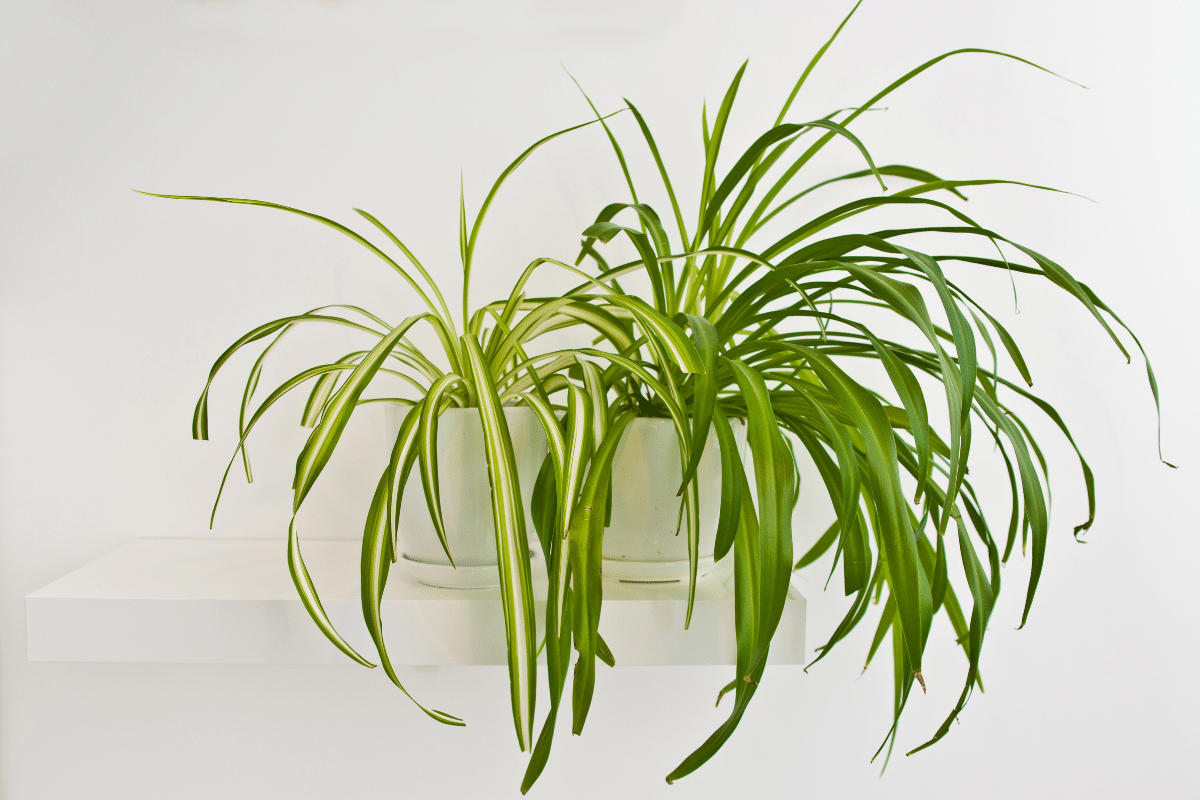
This plant is native to South Africa and is easily recognizable for its long, narrow, strap-like leaves that jut out from a central point.
You can choose from many varieties of this plant species. What the varieties have in common is their spider-like appearance. In general, spider plants form a clump of leaves.
When I say you can choose from many types of spider plants, I mean it: there are more than 200 varieties of spider plants grown worldwide. Most of them usually grow around one to two feet long. They’re also characterized by thick, fleshy roots and the presence of rhizomes that help this ornamental plant survive even without a regular watering schedule.
There’s no question that this plant is gorgeous, and it easily fits and livens any indoor space. But did you know this plant also has benefits? According to studies, these plants may help improve your air quality. If you want to learn more about how these plants help improve the air in your home, check out the 10 Best Indoor Plants For Oxygen.
Different Types of Spider Plants
With over 200 varieties, you might be overwhelmed when choosing the variety of spider plants you want to take care of first. While there are many different spider plant varieties, they are commonly categorized into three groups: variegated, solid green, and curly spider plants.
Variegated Spider Plants
When asking people about the best spider plant varieties, many will likely tell you that it’s the variegated variety. By far, it’s one of the most popular spider plant types out there, and it’s easy to see why.
Some of the different varieties under this type include the following:
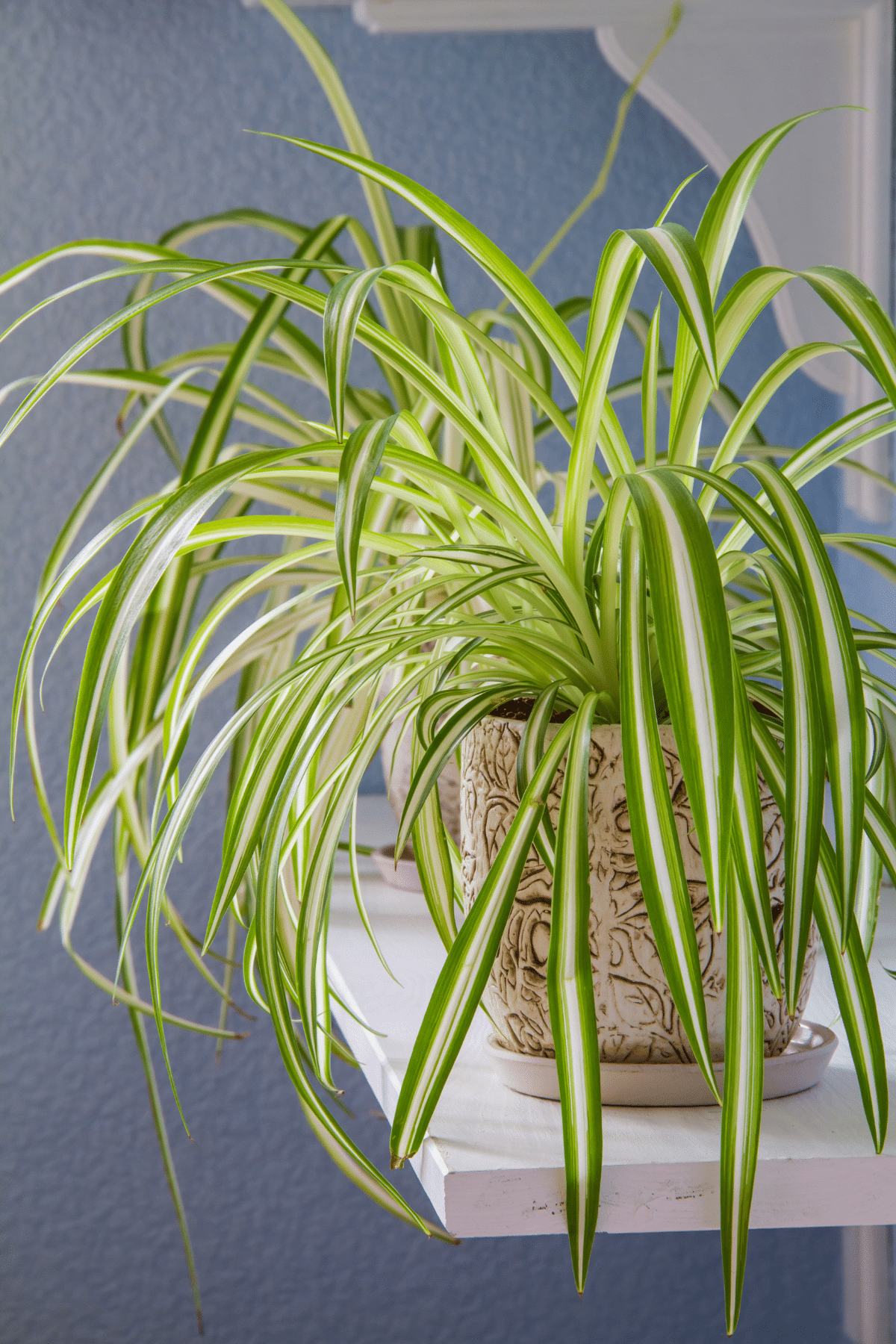
- Vittatum Spider Plant – wide, slightly curved leaves with wide cream middle and green edges
- Variegatum Spider Plant – looks similar to the Vitattum variety but with a more exaggerated variegation.
- Zebra Grass Spider Plant – has larger leaves with a green middle and cream edges
- Fire Flash Spider Plant – has long, slightly round leaves with green edges, a cream middle, and a fiery pink or red stem
- Reverse Spider Plant – narrow, long leaves with a green middle and cream edges
- Ocean Spider Plant – has wider but shorter leaves with a green middle and white edges; usually looks spiky more than trailing.
While this type is the most popular, it’s also one of the most common types available. So, if you fancy one of the many variegated species, chances are, you’ll easily find them!
Solid Green Spider Plants
Unlike the variegated type, solid green spider plants have green leaves that are predominantly one color. These plants are rare and challenging to find, but their gorgeous, blade-like dark green leaves make them worth having.
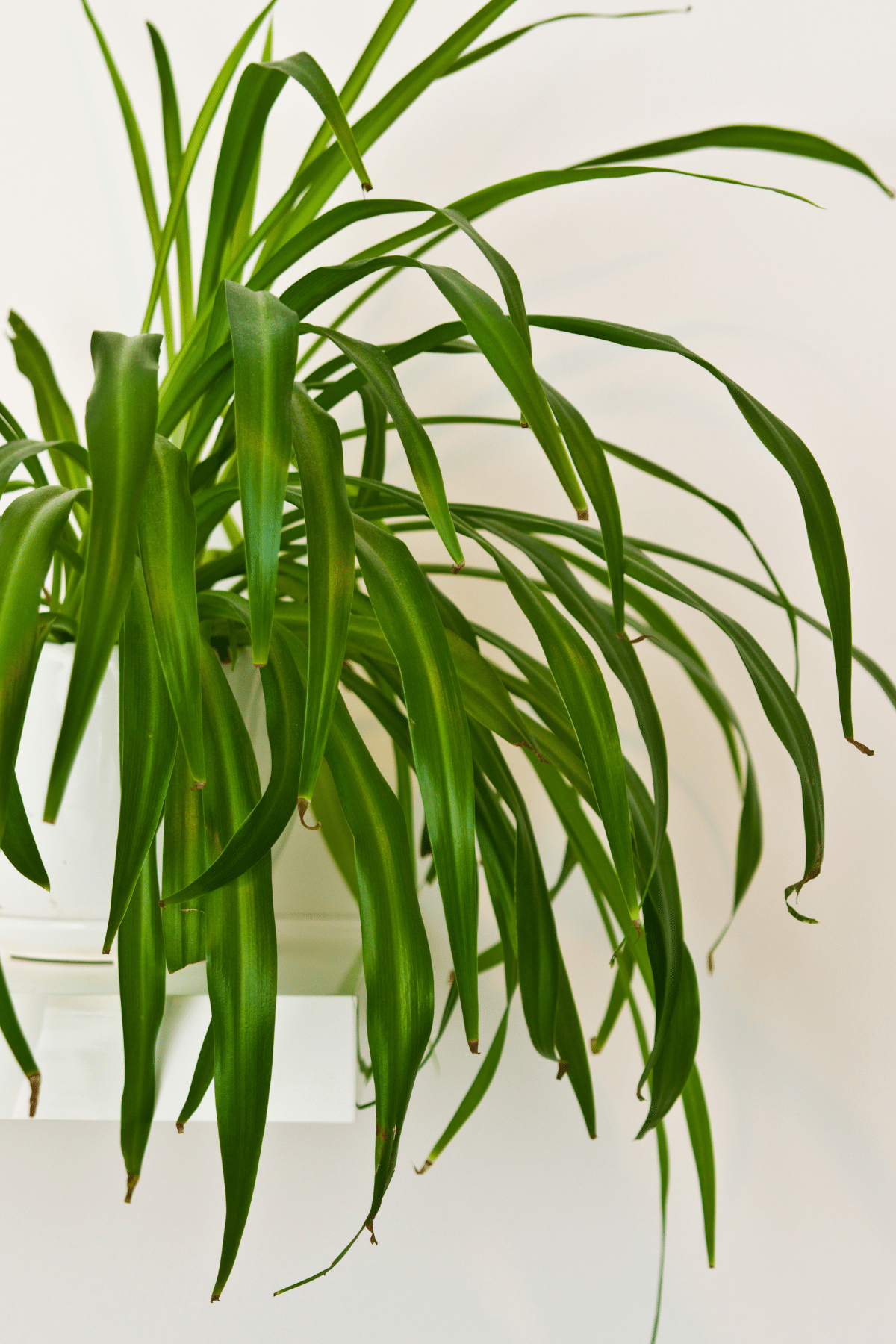
- Heirloom Green Spider Plant – features long, glossy, solid green leaves
- Shamrock Spider Plant – long, thin leaves in solid green color
While this type is resilient and beginner-friendly to take care of, you won’t find it in many nurseries or big box stores. You’ll likely have a better time finding them online or in specialized nurseries.
Curly Spider Plant
Curly spider plants are a rare variety of spider plants you may come across. Commonly, these plants have variegated leaves. What makes them unique are their curled leaves.
The most common variants associated with this type include:
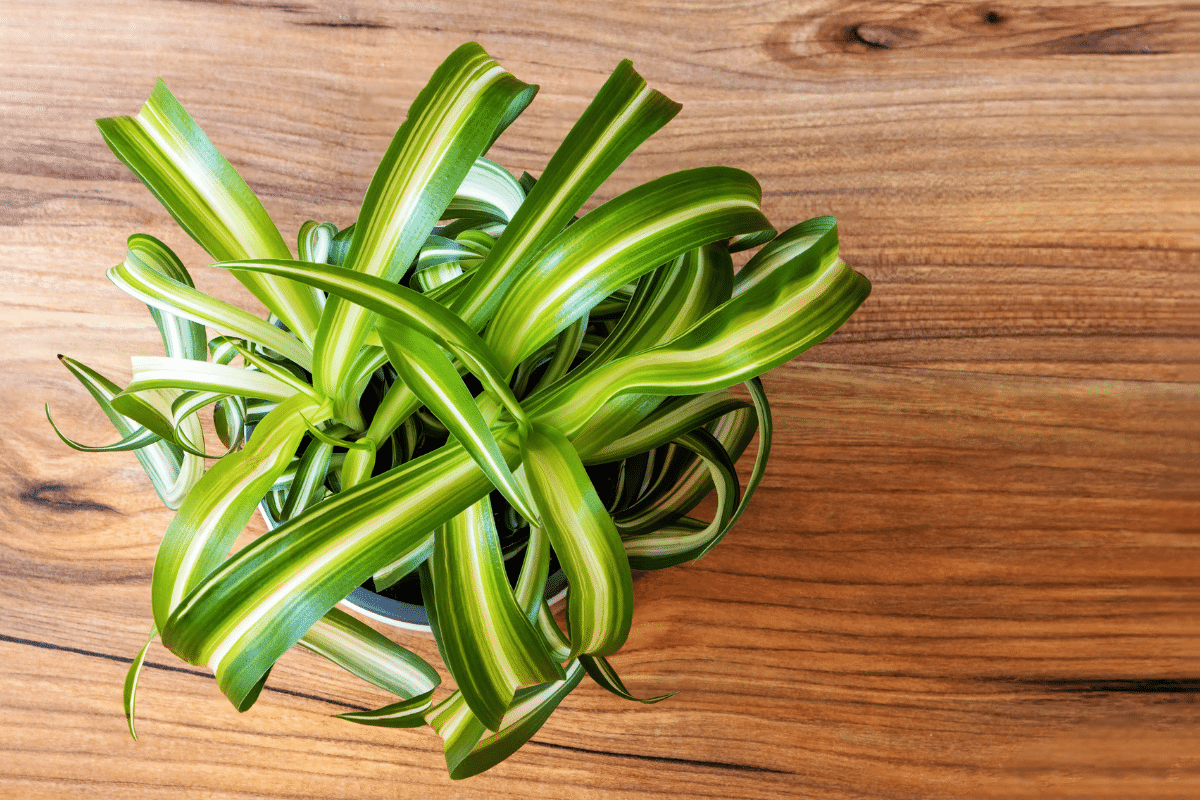
- Bonnie Spider Plant – curved leaves with cream middle and green edges
- Variegated Bonnie Spider Plant – looks like a bonnie spider plant but with more intense variegation
How to Care for Spider Plants
Spider plant care is a breeze. Because of this, spider plants are one of the most common go-to plants for new gardeners. Apart from easy handling, they are also resilient to neglect.
But as a plant owner, you would want your plants to thrive. So, here are some plant care tips.
Proper Lighting
When it comes to lighting, almost all species in the spider plant family love bright, indirect light. It’s best to avoid placing them under direct sunlight, because it can result in the scorching of the leaves.
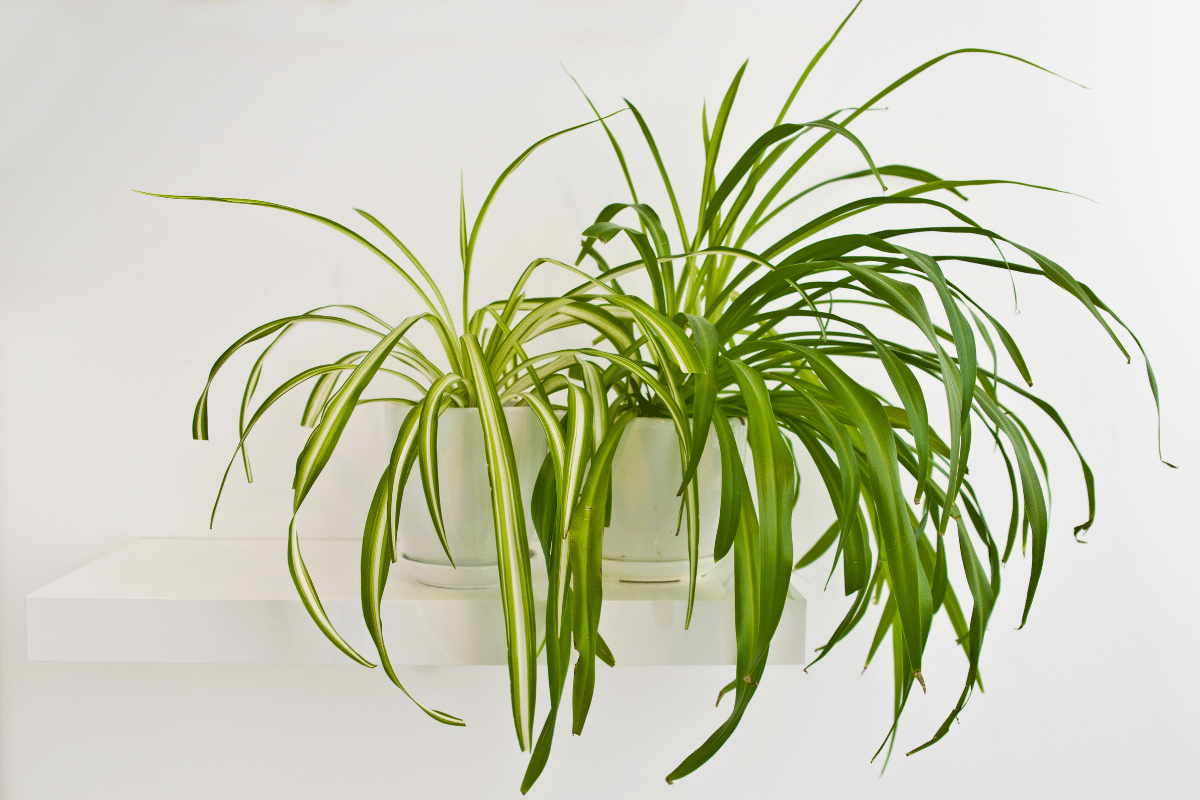
Most types of spider plants grow in low light, but this doesn’t mean they will do so to their fullest potential. Those growing in extremely low light may fail to grow plantlets. Also, they may lose their unique variegation under low light conditions.
Well Draining Soil and Regular Watering
A spider plant is also known to love well-draining soil. It also grows better if you water it after the top part of the soil dries out a bit in between. Usually, this will take between four to five days.
When you do water your plants, do so when the excess water starts draining out the bottom of the pot. If you can, you should use rainwater or distilled water for spider plants to keep their color and variegation vibrant.
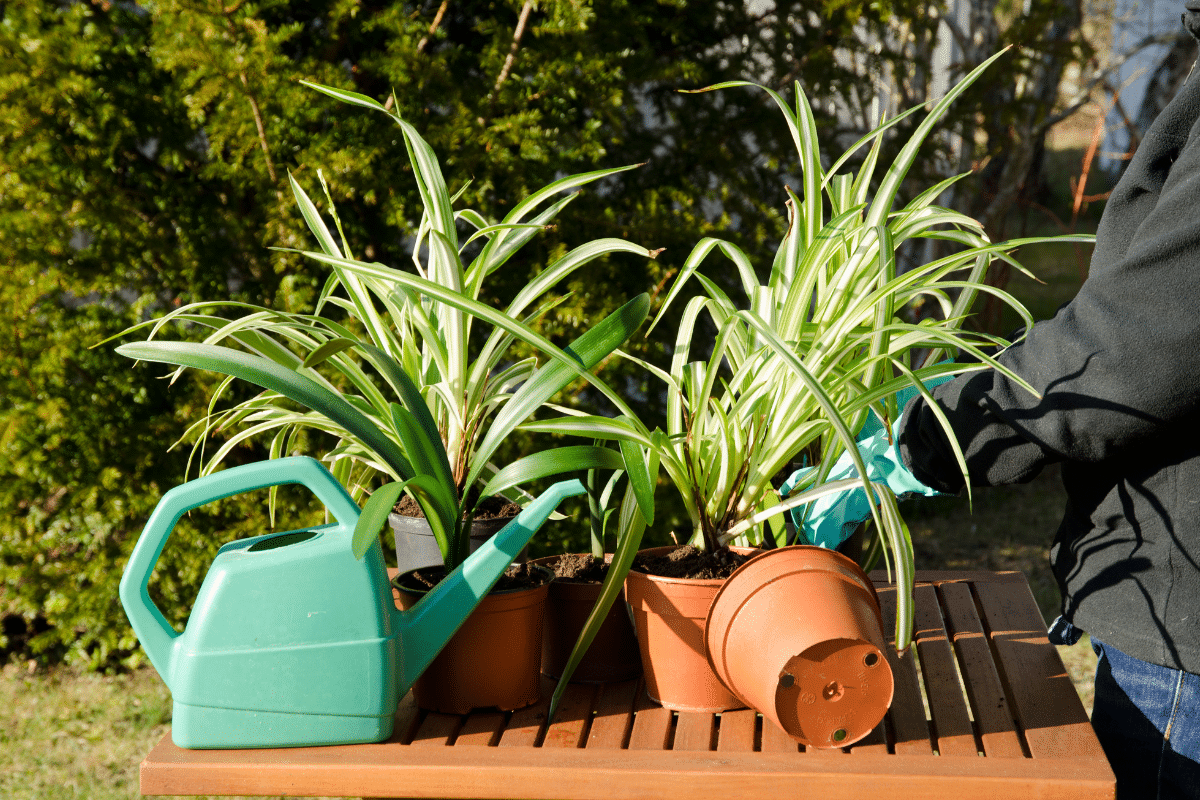
Temperature and Humidity
To help these types of spider plants thrive, remember that spider plants grow well in humid and warm environments. So, when you keep them at home, you should try to replicate these conditions.
I use use a humidifier in the room to help with this, so if you have one at home, you can also use that and see the effect on your spider plants. If that’s impossible, frequent misting may suffice. Additionally, you should avoid placing them near fans, AC units, and areas in the house reached by cool drafts.
How to Propagate Spider Plants
Besides being easy to care for, spider plants are also easy to propagate. In a nutshell, all you need to do is put plantlets into their pot.
To do this, prepare a pot filled with soilless potting medium. Then, while it’s still attached to the mother plant, place your plantlet on the soil’s surface. Let this plantlet take root before cutting it off from the mother plant. Alternatively, if you find a plantlet with roots, you can plant it directly into another pot.
Common Spider Plant Issues
Developing Brown Leaves
In some cases, you may see your spider plant’s leaves turning brown. This is usually due to watering too much or too little. When watering, make sure the soil isn’t too dry before doing so. On the contrary, don’t overwater to the point that the roots of your spider plants are waterlogged.
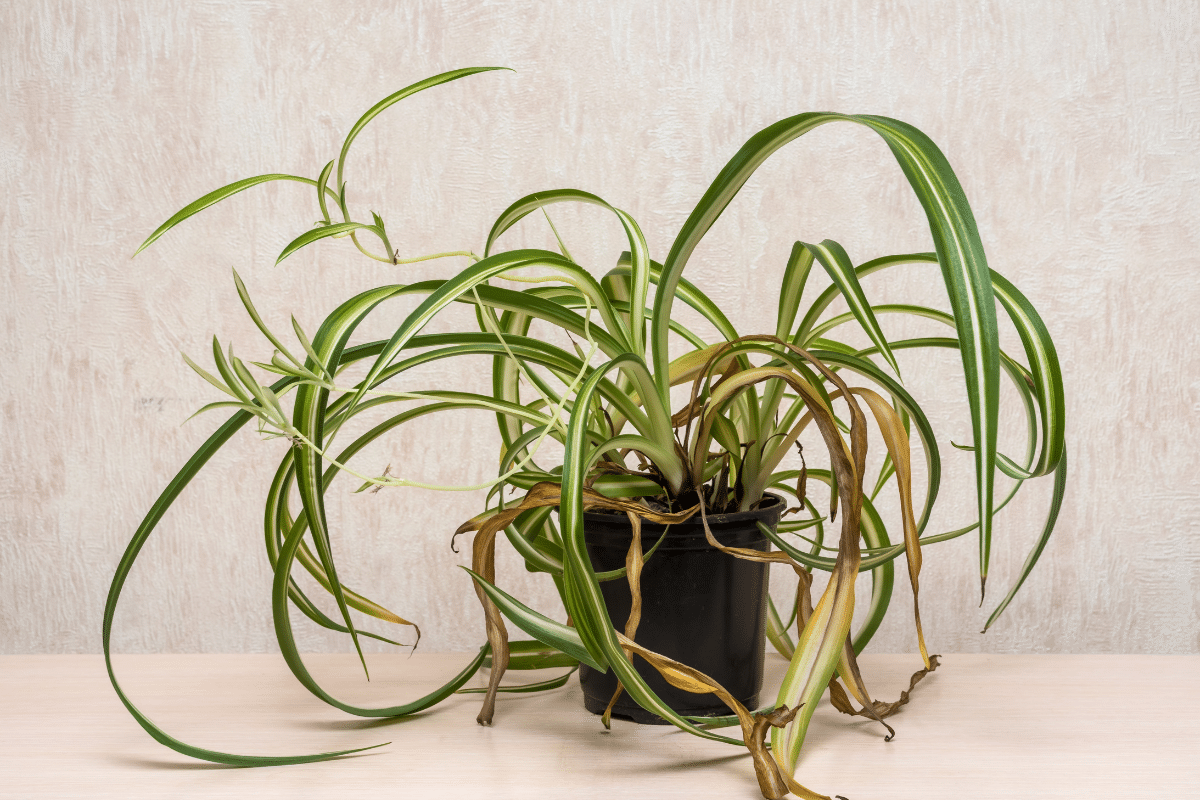
The leaves of your spider plants may also become brown if the room you placed them in lacks humidity. Remember, spider plants love a humid environment. So, if you can, do frequent misting or run a humidifier. Also, make sure to avoid placing your plants near heat sources.
Lastly, browning may also occur if they’re exposed to mineral or salt buildup that may come from the water you use on them or from fertilizer. So, using collected rainwater on spider plants may be best.
Pests
Many pests can stay on your houseplants, even ones as resilient as spider plants. Usually, you may see aphids, mealybugs, and other insects infesting your spider plants.
Usually, you can resolve smaller infestations using lukewarm or cold water misting. However, larger ones may call for soap that acts as an insecticide.
FAQs
Spider plants are quite versatile and resilient. You can grow them as indoor ornamental plants or have them in the garden. This plant species can easily thrive if you help them grow in the right conditions.
Yes, spider plants are incredible hanging indoor plants. It’s also a great way to show off their long curved leaves and even the plantlets growing, if any.
With its resilient nature and with being a perennial plant, spider plants usually enjoy long lives, especially if you care for them properly. Also, if you regularly repot and divide or propagate them, you can enjoy several generations of spider plants without much of a fuss.
Gorgeous, Low-Maintenance, Resilient
If you’re only starting your journey in taking care of a garden or houseplants, it might be overwhelming to choose what to take care of. There’s the pressure of keeping your plants alive and helping them thrive. Luckily, plants like spider plants help ease you into learning more about plant care.
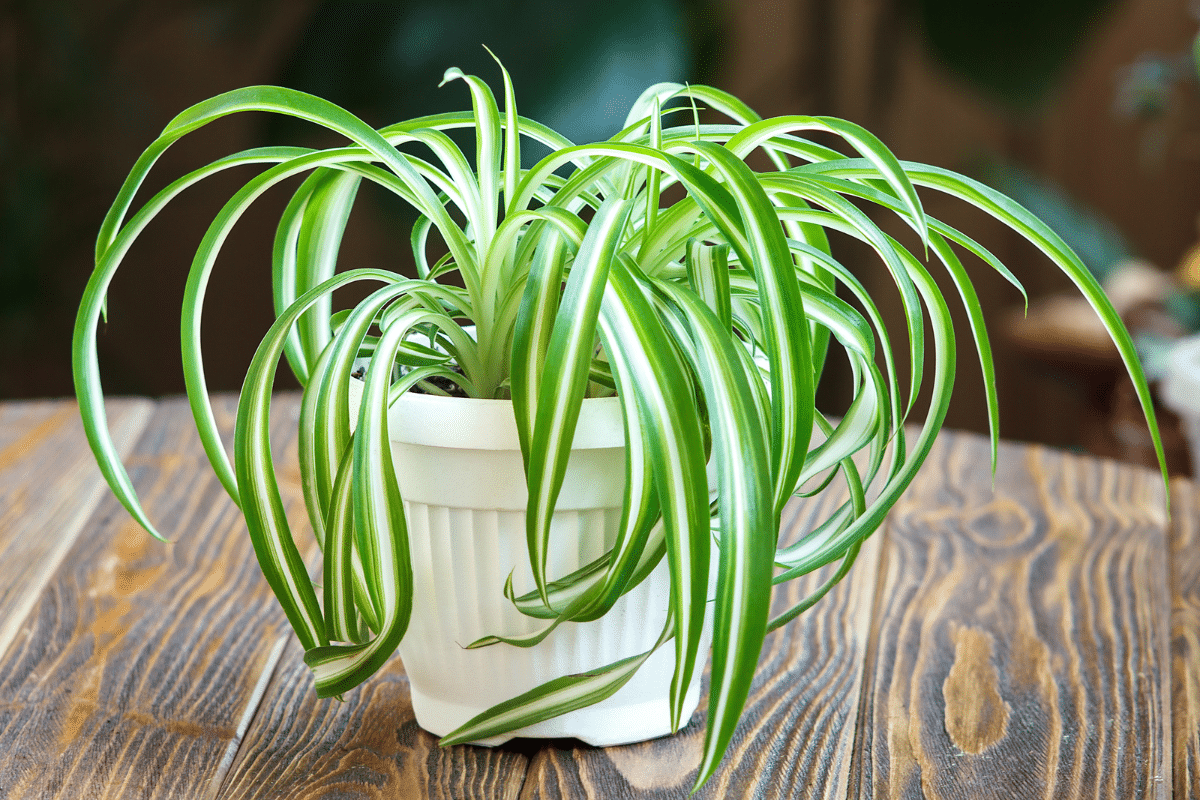
Want to start with a low-maintenance plant that easily brightens up a room? Or do you want to add a reliable but eye-catching houseplant to your indoor space? Check out some of the types of spider plants you can get today and liven up your living space!

